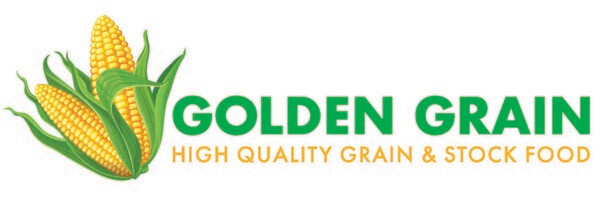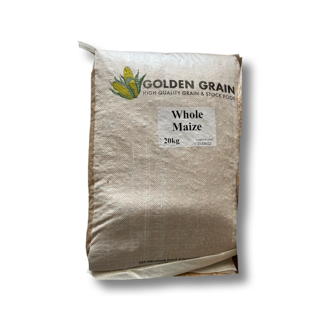
Whole Maize - 20kg
Maize is a high-energy grain that can be used to improve dairy cow production and reproductive performance.
Packed with high energy starch, maize grain can lift milk yields, milk protein content and the size of your milk cheque. Convenient and easy to source maize grain can be fed mixed with silage in bins or through an in-shed feeding system.
| Table 1: Nutrient content of concentrates1 | ||||||
|---|---|---|---|---|---|---|
| Feedstuff | Energy Content (MJME/kgDM) |
Crude Protein (% DM) |
NDF* (% DM) |
SSS* (% DM) |
Starch (% SSS) |
Fat (% DM) |
| Maize grain | 13.5 | 8.0 | 9 | 75.1 | 99 | 4.3 |
| Barley | 13.0 | 11-12 | 16-21 | 60 | 90 | 2.0 |
| Wheat | 13-13.5 | 13.0 | 11-14 | 70.0 | 90 | 1.5-2.0 |
| Oats | 11.5 | 13.0 | 31 | 47.5 | 90 | 4.9 |
| Molasses | 11.6 | 4-6 | 0 | 64.4 | 0 | 0 |
| PKE | 11.0 | 14.0 | 70 | 5 | 8.0 | |
| Typical Dairy Meal2 | 11-13 | 13-16 | - | - | - | - |
Maize grain is an excellent option for feeding to dry cows as well as milking cows. As a concentrate, it has the advantage of lifting feed intakes when cows are being optimally fed and reducing the risk of substitution. Providing it is fed in conjunction with a good protein source (e.g. leafy pasture), maize grain is an excellent feed for young stock, promoting rapid rumen development meaning calves are able to be weaned on to grass quicker.
Maize grain feeding rates will vary depending on the age and production level of the livestock and also the amount and type of other feeds in the diet. Current recommendations are for a maximum of 38% total soluble carbohydrate and 30% total starch in the whole diet (pasture plus supplements)5. As a general rule of thumb, for pasture-based diets, maize grain can be fed to a maximum of 30% of the total drymatter intake. Feeding rates will be lower when the diet contains other carbohybrate sources (e.g. other grains or meals, molasses or high carbohydrate byproducts, (for example kiwifruit and potatoes). No more than 2.5 kgDM maize grain should be fed in a single feed
